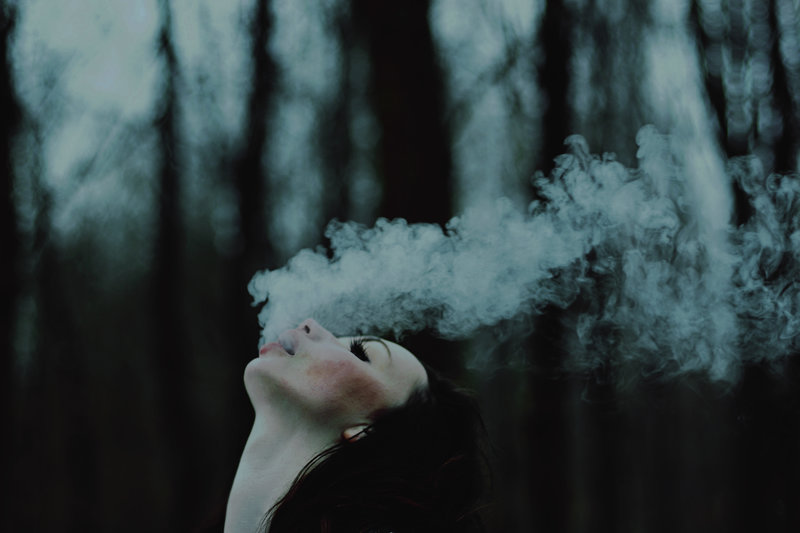
When I practice yoga I always get yogi stoned. If you have ever been or heard about a Forrest Yoga workshop intensive, then you probably have heard the term “yogi stoned” , and yogi stoned is a state of well-being in mind-body-spirit after an intense and deeply committed yoga practice where we turn off our thinking mode and enter into our feeling mode with our deep intentional breath. In those moments on the mat, we are intoxicated by our own feel good chemical apparatus and when we stay in a pure state of feeling, we evolve, we transform, we grow with an open heart and expanded spirit.
My natural pleasure happy center pharmacology kicks in and endorphins, oxytocin, serotonin and dopamine flood my system giving me the relaxed-everything-is-going-to-be-okay-cool-breeze-exhilarating-defeating-my-fears-go-with-the-flow feel. But getting yogi stoned doesn’t happen without deep, consistent commitment to my intentional breath in each moment and pushing my edge on the mat.
After reading a piece in Yoga Journal’s May issue entitled A Yoga High by Mike Kessler, I was appalled. There are yoga studios in LA that advocate, support, and allow students to get high on marijuana and practice yoga, all in the name of deeper practice, connection, and consciousness.
Thank goodness for all the recent findings in social neuroscience. Drug addiction damages the brain period. Moreover, marijuana use while on the mat is anathema to the practice and a yogi’s commitment to the Yamas (universal moral commandments) and Niyamas (self-purification by discipline).
I particularly want to point out the first niyama, which is Saucha or purity. In Light on Yoga, B.K.S. Iyengar describes this niyama as “purity of body is essential for well-being.” He further describes purity of the body not just as external cleanliness, but also an internal cleanliness wherein our breath and the food we eat cleanse our minds and our bodies.
Last time I checked, pot use didn’t fit the bill for purity of body essential for well-being. In fact, if you ever tried to have a conversation with a stoner, purity is probably not the first word that comes to mind. Two words that come to my mind are numb and scattered, it’s nothing even close to centered and aware, which are two states of being that are vital for a deeper tuned in practice.
The brains of drug users are different than non-drug users. Drug users have impaired functioning in their prefrontal cortex, which is the CEO center of our brain, so their capacity for rational thought is diminished.
Gabor Maté in his groundbreaking work on addiction, In the Realm of Hungry Ghosts – Close Encounters with Addiction, chronicled the development of our internal chemical happiness apparatus and its effect on our desire to seek joy or relief internally or via drugs or other addictions. He states “The less effective our own internal chemical happiness system is, the more driven we are to seek joy or relief through drug-taking or through other compulsions we perceive as rewarding.”
He further points our brain’s opiate receptors, our natural feel good apparatus that give us the feelings of reward, soothing, and connectedness, are also triggered by narcotic drugs, marijuana and they play a role in other compulsions as well. When endorphins lock into the opiate receptor, they trigger the chemistry of love and connection. Endorphins play a significant chemical role in our happiness – they alleviate physical pain, ease emotional pain, create parent/infant bonds, maintain social relationships, and trigger feelings of intense pleasure. Less natural endorphin activity in the addict means a greater desire for the false sense of love and connection that drugs provide.
Maté further found that “children who have not received the attentive presence of the parents are…at greater risk for seeking chemical satisfaction from external sources later in life.” This is because as children, addicts weren’t given the opportunity to properly form their natural pharmacology and endorphin release, and they were left with forming their own inadequate coping mechanisms, which based on Maté’s research, are exhibited in various addictions and compulsions later in life.
So how is toking a blunt before a yoga class connected to Matés addiction findings? Each time someone partakes in drug use such as smoking marijuana, they are wiring their brain to become addicted to obtaining their pleasure from the release of opiate receptors via the drug instead of through the natural feel good apparatus already built into our biology. The more they obtain the activation of opiate receptors from the drugs, the less effective our feel good opiate receptor apparatus is and the less we will feel good naturally. Moreover, if they have had any adverse childhood experiences that have contributed to inadequate coping mechanisms in their life, tokers are likely involved in a vicious cycle wherein they keep numbing out instead of feeling out. Numbing out is pretty easy, feeling out is hard work. They are creating a false sense of love and connection, which over the years can create many muddied waters in the heart, mind, and spirit instead of keeping them clean and pure.
When we practice yoga and meditation we release all of our natural happy chemicals – endorphins, serotonin (well-being and happiness), dopamine (reward center), and oxytocin (trust/connection center). When we practice on the mat whether in moving our bodies or steadying our minds, we practice saucha or purity. We cleanse our mind and our body with our breath. We formulate new, healthy, and natural ways to rewire our brain so that the natural chemical happy-feeling apparatuses we have communicate in the most productive and efficient way possible.
Unlike as suggested in the article A Yoga High, when we toke it out and practice on the mat, we only go deeper into falsity and muddy brain, heart and spirit waters. We steer away from our yogi commitment of purity. So, while some may toke and flow and attest that their practice deepens because their drug of choice has ignited their opiate receptors leading them to a painful false roadblock they can’t quite see because the false sense of self keeps the neural communication rivers flowing with a lot of addictive endorphin recharge and static, I will keep steady in forgoing numbing out and instead commit to feeling it out on the mat with my breath and building up my natural pharmacology and deepening my commitment to purity a little more each time I commit to breathing a little deeper, and I trust from this viewpoint and process, the muddy waters are a little less muddy, and I become a little more aware, my brain rewires itself in ways that are a little more productive and efficient each time I commit to my breath instead of numbing it out.
I’m all for getting yogi stoned, the feel it out with your breath kind of stoned on the mat that happens with intentional breath and commitment to the engagement in the process of practice. And with my commitment to saucha, I know that I will see a little more clearly, I will breath and feel a little more clearly each time I stay steady with my deep and intentional breath.
So if anyone wants to advocate a yoga high, well then, I will start by saying toke on your own breath, it’s deliciously transforming and intoxicating.
Om Shanti Om ~ Athea


Comments on this entry are closed.
I too was surprised and taken aback by that article in yoga journal. Can you submit this piece to them as a response? Its a great blog piece which stands on principals, truth and modern research. Thank you for brining this to light. I totally agree and I think this pot smoking/yoga deal in just a money grabbing venture which flys in the face of the very core of the principals of achieving authentic self realization and yoga consciousness. Thank you, Bev
Thank you for your thoughtful response, Beverly. I did submit this piece to the Yoga Journal and I hope they will print in next issue. Thank you for your amazing support. Love and Hugs ~ Athea
Glad to hear that you’re so open minded. If other people need something extra to reach that intimacy with themselves then so be it. I certainly don’t think that it’s your issue. Also marijuana was commonly used in ancient yoga practices, the practices that most of our current yoga is derived from. I don’t agree with high yoga, but I’m not in the minds of those who agree, maybe they do need that to feel intimacy. Maybe they have a difficult time focusing and it helps. You are not in their mind and you don’t know what feels right to them. This idea is very common in our practice. when doing a certain pose, we are told to roll our shoulders, stretch our legs, or do any motion that feels right to OURSELVES. Maybe it feels right to them, and maybe something different feels right to you.
All in all, I’m just confused why you care what others are doing.
Thank you for your comment, Nick. I appreciate your perspective. Love and Hugs ~ A